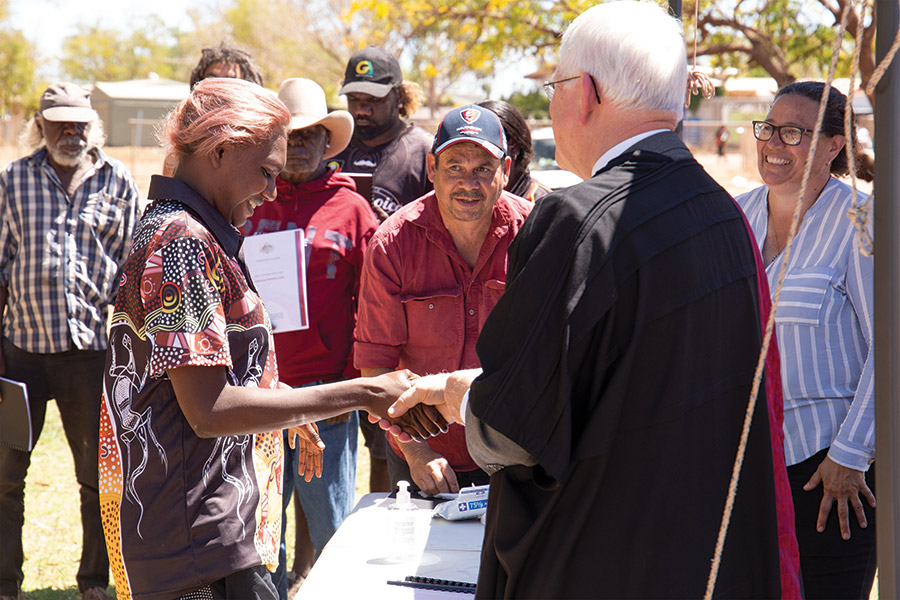
Native title holders are getting ready to celebrate the long awaited determination of native title over the childhood home of land rights leader Vincent Lingiari, Limbunya Station, on 10 September.
The Nawurlala [NA – were – la – la], Parayi-Kakaru [PA – rye KA – ka – ru], Tjutamalin [TJU – ta – ma – lin] and Central Limbunya land holding groups will gather at the Karungkarni Arts and Culture Centre in Kalkaringi at 11:30 to witness the Federal Court’s Justice White hand down the determination.
“It means that the traditional laws and customs of native title holders are recognised in Australia law, and they can use the area in accordance with them,” said the CLC’s manager of native title, Francine McCarthy.
“They will be able to access the pastoral lease land to hunt, gather, teach and perform ceremonies and to negotiate exploration and mining agreements, but unlike on Aboriginal land, they have no veto right.”
“The determination also recognises that their cultural connection to their land dates back to time immemorial.”
The 5,218 square kilometre determination area, northwest of Kalkaringi, belonged to Lord Vestey’s cattle empire and was run as part of Waterloo Station until the 1980s.
As on all Vestey’s stations, conditions were extraordinarily difficult for Aboriginal workers and their families who were paid in rations and shifted around from station to station and across state and territory borders.
However, despite these hardships, the traditional owners of this country maintained a very rich cultural life against the odds.
They kept their songlines alive as they travelled around, and as relatively distinct cultures intermingled, the Vestey stations became a crossroads of many song traditions.
It was not uncommon for station workers from the region to walk hundreds of kilometres to Limbunya during the wet season to attend ceremonies.
Quoting a custodian named Daelngari, anthropologist Catherine Berndt wrote in 1950 that the station was a major ceremonial centre in the continuation of law and customs:
“It was her contention that sacred and secular ceremonies from all the surrounding country met at this centre from the north-west coast, and Ord River; from Tanami and the Granites north through Inverway; from Newcastle Waters and the main north road, through Mudbara [sic] territory and Wave Hill; from the mouth of the Victoria and Timber Creek, through Waterloo, and through Victoria River Downs; and from Darwin and Katherine down through Willaroo.”
After Mr Lingiari led striking Aboriginal workers off Wave Hill Station in 1966, families working on Limbunya and other Vestey-owned stations also walked-off.
Many of their families today live in Kalkaringi and Daguragu and native holders continue to access their country for cultural and ceremonial purposes.
The CLC lodged the native title application in January 2017, following the successful native title claim over Kalkaringi, in part because there is mining interest in the pastoral lease area.
The native title holders will exercise their rights through their prescribed body corporate, the Malapa Aboriginal Corporation, while Limbunya Station will continue to operate as a cattle station.
